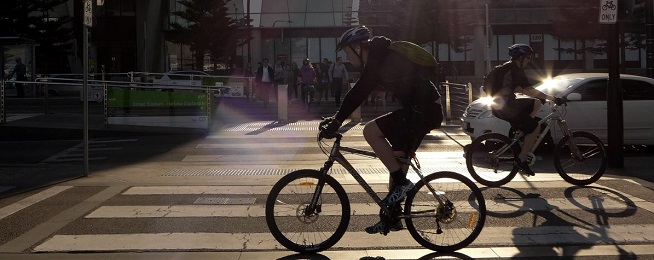Now's the time to build more places to ride to help people turn bike riding into a lifelong habit, writes Bicycle Network CEO Craig Richards.
One of the unexpected positive habits that’s come out of the terrible COVID-19 pandemic is that Australians have taken up bike riding in record numbers.
With April bike sales surging past Christmas numbers, the latest quip has become “bikes are the new toilet paper”.
The often-quoted phrase is that it takes 21 days to form a new habit.
With a month of stage three lockdown under our belts, the question is, will the new bike-riding habit continue when we’re released?
For many people, their decision to take up bike riding has been a process of elimination. I can’t go to the gym, I can’t play sport, I need to move, what can I do? Ride a bike. I can’t go to the footy, I can’t go to the shops, I need to get out of the house, what can I do? Ride a bike.
It’s amazing to see so many families and couples out in the sunshine smiling as the fresh air rushes past.
Bicycle Network counts show the numbers of people on bikes has increased by more than 300 per cent on some trails.
While people may be riding because their regular activities are off-limits, more important than the numbers is the happy faces. As John F. Kennedy said: “Nothing compares to the simple pleasure of a bike ride.” Surely, no one will give that up?
When you delve into the 21-day habit theory a bit deeper, you find that research shows the average length of time for a habit to stick is actually more like 66 days. For some it can take over 200 days.
The worry is that unless stage three restrictions last the rest of the year, many families will quickly go back to bundling the kids in the SUV, popping on a movie and racing around to drop them off at basketball, ballet or some other essential activity.
Many places around the globe have been taking steps to avoid that happening.
City planners have realised that for people to get their physical activity while maintaining their physical distance, more space is needed for bikes.
We’re seeing hundreds of pop-up bike lanes appearing around the world every day.
Regrettably, in slow-to-move Australia we’re still waiting for a single bit of extra space to be allocated to bikes.
As a result, on a sunny day it’s quite a challenge to keep 1.5 metres apart from the other pedallers. The COVIDSafe app may go into meltdown if people on bikes keep having hundreds of close encounters.
An even bigger challenge is coming when we leave our home offices and return to the city.
The fear that boarding a train carriage will be like boarding a mini cruise ship could mean many of us find a new way to get to work.
If every public transport user leaks into their single-occupant vehicle, the traffic will be worse than ever.
That’s where all those newly-purchased bikes can come to the rescue as the simplest solution to one of the world’s most complicated problems.
Instead of the bikes sitting forlornly in sheds with flat tyres or replacing mattresses as the item least likely to be emancipated from a hard garbage collection, we need them to become commuting devices for those who travel less than 10 km to work. We have a window of opportunity to act now.
While people are taking up bike riding we can change our world so that the supply of places to ride meets the demand.
Then, when this is over, bike riding will continue to be a healthy habit and our traffic won’t return to its previous chaos.
The final question is, what are we waiting for?
The clock is ticking. We might not have 200 more days of isolation to make sure bike riding becomes a habit instead of a yoyo-like fad.
If we act now, some good can come out of this lockdown. Just as the 1970s oil crisis set the Dutch on the path to being a nation of bike riders, the 2020 COVID-19 crisis can leave a bike-riding legacy that builds lifelong family bonds and enables us all to move around easily.


